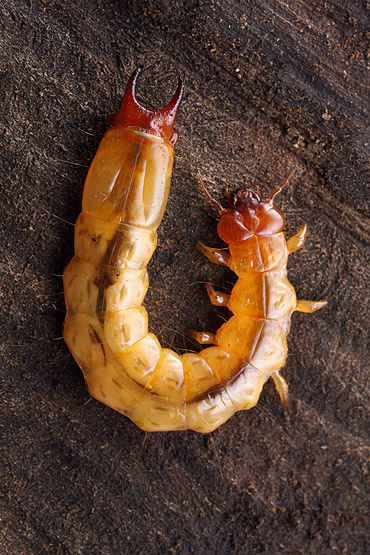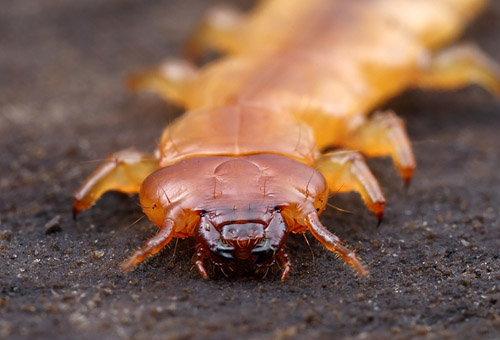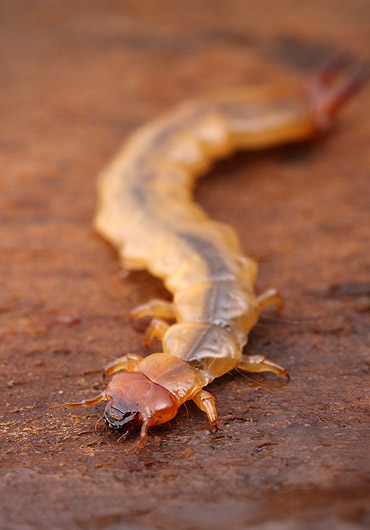
Dendroides fire-colored beetle,
Illlinois
We in the Friday Beetle Department don't often turn our attention to immature beetles. But these Dendroides larvae are too striking to pass up.
Dendroides fire-colored beetles inhabit the flat, two-dimensional space under the bark of dead trees. The oddly compressed body helps this insect squeeze through tight spaces looking for food.


update: Identification updated, on closer examination of the urogomphi. I think everyone should spend more time examining urogomphi.
Photo details: Canon mp-e 65mm 1-5x macro lens on a Canon EOS 50D
ISO 100, f13, 1/250 sec, diffused flash

*shudder* very beautiful but I'm glad I wasn't there.
Gorgeous!
Predators, eh? Somehow I always took these for fungus-infested wood munchers.
We see a lot of them when ant-hunting; Don't you agree?
Well. I've done some more digging, and it appears from gut-content studies (Smith & Sears 1982) that C. clavipes is indeed a predator.
But. It also turns out on close examination of the urogomphi that the beetle I've photographed here isn't C. clavipes at all, but a convergently similar beetle in the tenebrionoid genus Dendroides. Crum. Perhaps I should stick to the Hymenoptera instead of flirting with beetles all the time.
Well, I've kind of come to the conclusion that, most of the time, trying to identify larvae by any means other than rearing them to adulthood is kind of a mug's game. One generally tubular eating machine tends to look a lot like all the others that live in the same environment.
"One generally tubular eating machine tends to look a lot like all the others that live in the same environment."
Shall we call this Eisele's Postulate?
Wow- Is it's posterior end a mimic of a soldier termite head?? looks like one at first glance to me....
Great...no, STUNNING...photos. I found lots of Dendroides and Cucujus this winter, and they look a LOT alike. The urogomphi are key, and I agree: one can never spend too much time staring at them.